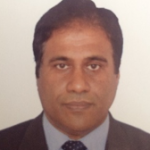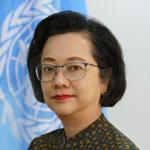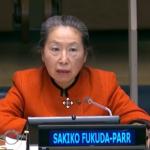This session aims to look at what we have learned on the implementation of the SDGs through the Voluntary National Reviews (VNR) carried out by the HLPF thus far. In total, 102 countries have presented their VNRs since 2016, with another 40 countries presenting for the first time at the July 2019 HLPF. In addition, seven countries will present their second review at this year’s Forum.
Taken together, the VNR presentations provide a global snapshot of how countries are implementing the 2030 Agenda and the challenges they face.
The VNRs have shown that many countries have reflected the SDGs in their plans and policies or reviewed consistency between the two. Many have mobilized the various parts of government and various, institutions around the SDGs or created new coordinating institutions. Many have conducted activities to engage civil society and the private sector in implementing the SDGs. But many challenges persist. Those relate for example to budgeting for the SDGs, systematically mobilizing local actions, engaging parliaments, or building awareness about the SDGs. Conducting integrated policies and engaging all parts of government in implementing the SDGs also remains a challenge. Actions for leaving no one behind also require more attention.
The session will allow participants to share their experiences and analysis on the lessons we have learned on SDG implementation through the VNRs conducted thus far.
This session will be organized as an interactive townhall meeting.
Background note is available here
Proposed guiding questions:
-
Which challenges or areas where more efforts are required to implement the SDGs have VNRs helped to identify?
-
What are successful policies to implement the SDGs, based on the VNRs?
-
What have the VNRs told us about the key challenges to implement the SDGs and ways to address them?
-
What transformative actions or cross-cutting initiatives resulted from the VNRs for the implementation of the 2030 Agenda? Have these actions been incorporated into plans and roadmaps to accelerate progress across all SDGs at the national level?
Chair:
-
H.E. Ms. Inga Rhonda King, President of Economic and Social Council
Presentation:
-
Mr. Luis Gerardo Gonzalez Morales, Chief, Web Development and Data Visualization Section, Statistics Division of UN DESA, on online SDG progress and VNR visualization platforms by UNDP and UN DESA
Moderator:
-
Mr. Achim Steiner, Administrator of UNDP
Resource persons:
-
H.E. Mr. Seán Canney, Minister of State, Department of Communications, Climate Action and Environment, Ireland
-
Ms. Rita Schwarzelühr-Sutter, Parliamentary State Secretary of the Federal Ministry for Environment, Nature Conservation and Nuclear Safety, Germany
-
Mr. Abel Hibert, Deputy Chief of the Office of the President for Analysis and Innovation, Mexico
-
Mr. Sugath Yalegama, Director General of the Sustainable Development Council, Sri Lanka
-
Ms. Armida Salsiah Alisjahbana, Executive Secretary of ESCAP
-
Ms. Sakiko Fukuda-Parr, Professor of International Affairs at The New School, and Member of the Committee for Development Policy
-
Ms. Shannon Kindornay, Director of Research, Policy and Practice at the Canadian Council for International Co-operation
-
Ms. Judy Njino, Executive Director, Global Compact Network Kenya, and Chair of UN Global Compact Africa Region Network Council
-
Mr. Chris Derksen-Hiebert, global Senior Director on Advocacy, Policy and External Relations, World Vision (MGoS)
Interactive discussion with all participants
 Welcome to the United Nations
Welcome to the United Nations










